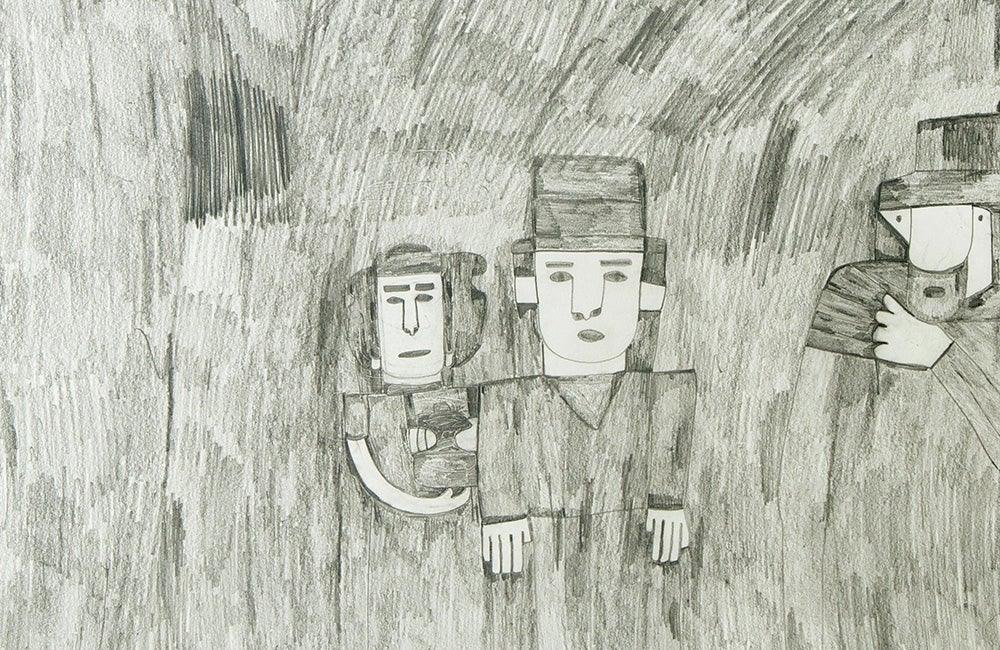First published: Spring 2013
Tall, slender, elegant… Alexis Lippstreu is of French origin. Born on 2 October, 1972, in Suresnes, he grew up in a loving and caring family which, to this day, remains his anchorage.
Lippstreu joined La Pommeraie, a centre located near Beloeil in Belgium, in 1992. This is when our joint story began. In those days, the centre was a small organisation offering only a few day activities, and every person arriving there could try every workshop before focussing on a single technique (such as woodwork, wrought ironwork, horticulture, and so on). The drawing studio had been open for two years and Lippstreu came for a few hours a week at first, then more and more regularly, in the same way as the other participants. He first showed an interest in the library where shelves were filled with books on art and animals, as well as magazines and catalogues. As the studio subscribes to several art magazines, every week there are new arrivals of books and journals. I was very surprised when, having spent a long time thinking in front of the shelves, Lippstreu chose a book and, from this book, a work of art which he started to copy. What attitude was I to adopt? It seemed to me that creation had to come from somewhere deep inside a person. Consequently, I considered the act of copying a work of art as something negative. Luckily I did not say or do anything, and little by little an extremely interesting body of work came into being.

Lippstreu’s style seemed to be established from the very first drawing. Now and again he will switch to a different format or technique, yet that does not seem to correspond to some stylistic evolution but rather to his fancy. The materials he uses are plain, mostly a 2B black pencil and sometimes a few coloured pencils that he sharpens with a Stanley knife. Now and then, oil pastels would appear for a few weeks. Yet Lippstreu is freer, less tied to the work that serves as a basis, when he simply works with a black pencil. That is when he creates extremely dynamic drawings with strong variations in shades, where light areas appear next to dark ones, while at the same time conveying a great sense of depth.
Often he is so caught up in his work, in the dynamics of his pencil strokes, that he does not notice that the lead of his pencil is completely worn out and that, without meaning to, he is carving into the paper with the wood of the pencil.
This is an article extract; read the full article in Raw Vision #78




